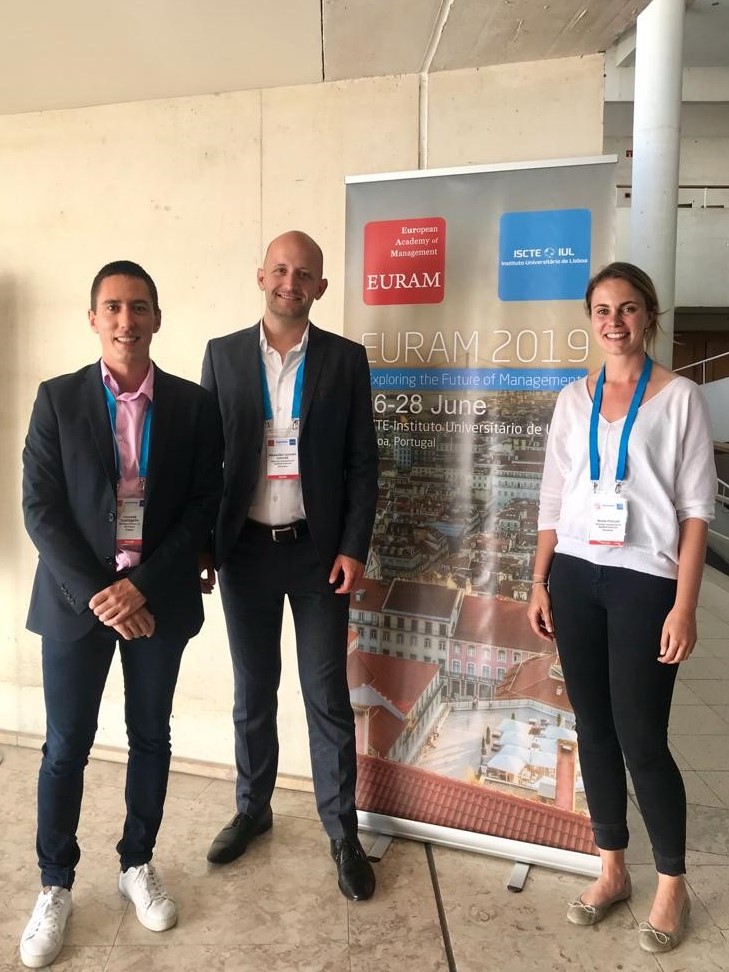26-28 June 2019 | Lisbon
28 and 29 June, Alexander Lennart Schmidt and Neele Petzold presented on the 19th European Academy of Management Conference in Lisbon. The EURAM aims at advancing the academic discipline of management in Europe and annually invites members of 49 countries in Europe and beyond to debate over a variety of research management themes and traditions.
Alex and Neele presented their paper entitled "4 pillars of disruption: David dancing with Goliath" in the Business Model track chaired by Dirk Schneckenberg from Rennes School of Business and Patrick Spieth from the University of Kassel. The paper is a collaborative project between Alex, Neele, and Laurent Scaringella from the Rennes School of Business and is part of S2BMRC's project "Managing Disruptive Change" granted by the BMBF.
In their paper, the authors explore the entrant's strategy in managing interplay tensions with incumbents that emerge during the entrant's disruptive path. Previous research showed that these tensions are coopetitive between entrants and incumbents - named "disruptor's dilemma" by Ansari, Garud, and Kumaraswamy in 2016 - and eventually, dissuade from the disruptive path. By comparing entrants' disruptive paths in the insurance and retail industry in Germany, the authors empirically found that entrants partner with companies from outside the industry early on for access to resources and relationships more equal to incumbents. This allowed entrants to withstand the tensions in the interplay with incumbents and thus, to pursue the disruptive path. Further, the interplay timing is critical, as an early interplay with incumbents is more difficult to manage for entrants to withstand the tensions and to pursue a disruptive path, whereas a later interplay grants the entrant time to develop a network, resources, and relationships. Within a strongly regulated industry, such as the insurance industry, the interplay between entrants and incumbents occurred even before the entrant's launch into the market and thus, entrants had to actively manage this interplay from the beginning, making it difficult to pursue a disruptive path. Lastly, the entrants within the insurance and retail industry focused on designing or eventually reconfiguring into a platform, opening their business model for complements by external parties thereby orchestrating external knowledge to create and capture value. This positions a network perspective as a strategic consideration at the core of the business model design from the beginning.
The discussion arose around the insights gained from applying a process perspective to a traditionally linear understanding on the phenomenon of disruptive innovation and how the phenomenon of disruptive technologies differs in its emergence and growth from the phenomenon of disruptive business models. Currently, the authors are conducting follow-up interviews with their informants.




